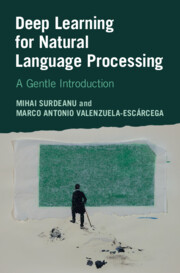Refine search
Actions for selected content:
48583 results in Computer Science
Damage localisation using disparate damage states via domain adaptation
-
- Journal:
- Data-Centric Engineering / Volume 5 / 2024
- Published online by Cambridge University Press:
- 02 February 2024, e3
-
- Article
-
- You have access
- Open access
- HTML
- Export citation
Understanding the influence of interpersonal factors on interactions in co-design through intersubjectivity: a systematic literature review
-
- Journal:
- Design Science / Volume 10 / 2024
- Published online by Cambridge University Press:
- 02 February 2024, e4
-
- Article
-
- You have access
- Open access
- HTML
- Export citation
Corrigendum: “Extended generator and associated martingales for M/G/1 retrial queue with classical retrial policy and general retrial times”
-
- Journal:
- Probability in the Engineering and Informational Sciences / Volume 38 / Issue 3 / July 2024
- Published online by Cambridge University Press:
- 02 February 2024, pp. 617-618
-
- Article
-
- You have access
- Open access
- HTML
- Export citation

Deep Learning for Natural Language Processing
- A Gentle Introduction
-
- Published online:
- 01 February 2024
- Print publication:
- 08 February 2024
Appendix D - Solutions to Exercises
- from Part IV - Appendices
-
- Book:
- State Estimation for Robotics
- Published online:
- 11 January 2024
- Print publication:
- 01 February 2024, pp 484-500
-
- Chapter
- Export citation
3 - Linear-Gaussian Estimation
- from Part I - Estimation Machinery
-
- Book:
- State Estimation for Robotics
- Published online:
- 11 January 2024
- Print publication:
- 01 February 2024, pp 40-96
-
- Chapter
- Export citation
Appendix B - Rotation and Pose Extras
- from Part IV - Appendices
-
- Book:
- State Estimation for Robotics
- Published online:
- 11 January 2024
- Print publication:
- 01 February 2024, pp 458-470
-
- Chapter
- Export citation
7 - Primer on Three-Dimensional Geometry
- from Part II - Three-Dimensional Machinery
-
- Book:
- State Estimation for Robotics
- Published online:
- 11 January 2024
- Print publication:
- 01 February 2024, pp 217-255
-
- Chapter
- Export citation
Part I - Estimation Machinery
-
- Book:
- State Estimation for Robotics
- Published online:
- 11 January 2024
- Print publication:
- 01 February 2024, pp 7-8
-
- Chapter
- Export citation
11 - Continuous-Time Estimation
- from Part III - Applications
-
- Book:
- State Estimation for Robotics
- Published online:
- 11 January 2024
- Print publication:
- 01 February 2024, pp 418-432
-
- Chapter
- Export citation
Acronyms and Abbreviations
-
- Book:
- State Estimation for Robotics
- Published online:
- 11 January 2024
- Print publication:
- 01 February 2024, pp xiii-xiv
-
- Chapter
- Export citation
Preface for the First Edition
-
- Book:
- State Estimation for Robotics
- Published online:
- 11 January 2024
- Print publication:
- 01 February 2024, pp ix-x
-
- Chapter
- Export citation
4 - Nonlinear Non-Gaussian Estimation
- from Part I - Estimation Machinery
-
- Book:
- State Estimation for Robotics
- Published online:
- 11 January 2024
- Print publication:
- 01 February 2024, pp 97-156
-
- Chapter
- Export citation
8 - Matrix Lie Groups
- from Part II - Three-Dimensional Machinery
-
- Book:
- State Estimation for Robotics
- Published online:
- 11 January 2024
- Print publication:
- 01 February 2024, pp 256-344
-
- Chapter
- Export citation
5 - Handling Nonidealities in Estimation
- from Part I - Estimation Machinery
-
- Book:
- State Estimation for Robotics
- Published online:
- 11 January 2024
- Print publication:
- 01 February 2024, pp 157-181
-
- Chapter
- Export citation
Part IV - Appendices
-
- Book:
- State Estimation for Robotics
- Published online:
- 11 January 2024
- Print publication:
- 01 February 2024, pp 433-434
-
- Chapter
- Export citation
1 - Introduction
-
- Book:
- State Estimation for Robotics
- Published online:
- 11 January 2024
- Print publication:
- 01 February 2024, pp 1-6
-
- Chapter
- Export citation
Part III - Applications
-
- Book:
- State Estimation for Robotics
- Published online:
- 11 January 2024
- Print publication:
- 01 February 2024, pp 345-346
-
- Chapter
- Export citation
Preface for the Second Edition
-
- Book:
- State Estimation for Robotics
- Published online:
- 11 January 2024
- Print publication:
- 01 February 2024, pp xi-xii
-
- Chapter
- Export citation
